The Nieuport Ni.28 biplane, the first operation fighter of the American Expeditionary Force, is one of the new fighters featured in WW1 Wings of Glory. Lightly built and highly maneuverable, the Nieuport Ni.28 was designed and built in France, but used by United States Air Service squadrons, in 1918. It was flown by many American aces, including the top rated Eddie Rickenbacker.
The Nieuport 28 was designed in mid 1917 by Gustave Delage for the Societe Anonyme des Establissements Nieuport, when the series of fighters, starting with the Nieuport 11 and continuing with the Nieuport 17, was outclassed by German fighters and was being replaced by the SPAD S.VII. To remain competitive, the company created a new lightly built model with a new engine for more performance – the Gnome Monosoupape 9N.
The 160-horsepower Gnôme rotary engine was more powerful and also heavier, so to compensate the surface area of the wings was increased, replacing the distinctive Nieuport’s V-Struts by parallel struts. The wing tips were elliptical in contrast to the angular wing tips of the predecessors, and the ailerons were moved from the upper wing to the lower wing. These were activated by torque tubes, which, like the rest of the Nieuport controls, were routed internally and contributed to its clean lines.
The design was more streamlined than earlier Nieuports. Due the small size of the aircraft, two machine guns and the associated ammunition bins and feed trays could not fit in the traditional location. Therefor, one machine gun was fit on the upper forward fuselage and a second machine gun was placed distinctively on the lower left fuselage side.
The first Nieuport flight was in June 1917, as a prototype. Several versions were built - testing three different dihedral settings for the top wing, including a completely flat wing and one with marked dihedral that rested very close to the top of the front fuselage. Production machines had an intermediate configuration, with a slight dihedral in the upper wing, taller cabane struts, and room for the second machine gun to be mounted under the center section.
When the Nieuport Ni.28 was approved for production by the French Air Service, its performance was not good enough when compared to the SPAD XIII, which already equipped the French squadrons. The new fighter was the preferred option for the American Expeditionary Force, as SPAD XIII supplies were limited.
The first squadron to receive the fighter was the 95th Aero in late February 1918, followed by the 94th in mid March. These first units were not armed until late March, but even so, the squadrons conducted unarmed patrols over the lines for training and 'in the interest of morale.' The first armed patrol was flown by the 94th on March 28, and the first kills were scored on April 14, by Lieutenants Alan Winslow and Douglas Campbell of the 94th Aero Squadron, each downing an enemy aircraft in a fight taking place directly over their home airfield at Gengoult.
In service, the Nieuport 28 had a good performance, due to the aircraft’s good maneuverability, impressive rate of climb and speed. But the fighter also had several issues. The most well known was the tendency to shed its upper wing fabric if the pilot pulled out of a steep dive too quickly. The problem was not the dive, but the pull out that wrecked the wing. Pilots, such as the ace Harold E. Hartney, noticed that despite the deformed appearance of the failed upper wings, in most cases control of the aircraft was maintained and the machines could land safely.
Other problems the 94th and 95th pilots had with the Ni.28 was undercarriage failure on landing (corrected by using heavier bracing wire) and the 160 hp Gnome Monosoupape rotary engine's unreliable and fire-prone fuel system. The solution was to leave the reserve fuel tank empty, which drastically reduced the Nieuport fighter's range.
A total of 297 Nieuport 28s, produced by Nieuport and Liore et Olivier, were procured by the US Army. The fighter also equipped the 27th and 147th Aero Squadrons, which arrived at the front in May 1918. In mid July 1918, the 94th and 95th retired their Nieuports in favor of SPAD XIII's.
By the end of August 1918, all four American squadrons were fully outfitted with SPAD XIIIs. The pilots of the 94th and 95th Aero Squadrons welcomed the SPADs, although the 27th and 147th Aero Squadrons were not so enthusiastic. Despite the problems, the US pilots were able to make a good use of the Nieuport 28, with a quite good kill-loss ratio. Major Bonnel of the 147th complained so bitterly about the change he was relieved of command and replaced by 1st Lt. Meissner, who had twice survived the loss of his top wing fabric and had no complaints about transitioning the 147th into SPADs.
The US Army placed an order for an additional 600 Nieuports (N.28A.1), which had several minor improvements, such as an upper wing leading edge structure, a redesign of the fuel system to incorporate an under seat tank in favor of the side mounted auxiliary tank, and Marlin machine guns in place of the Vickers. The Nieuport company was preoccupied with later types, so production was to be undertaken by Lioré et Olivier. With the end of the war, 170 Lioré et Olivier built Nieuport 28As, with parts for another 100, were purchased, the rest of the order being cancelled. A number of these Nieuports were brought to America were the army operated them as trainers for a short time.
Part of the Nieuport 28 fighters acquired by the United States were taken to the United States after the war. Twelve of them were used by the U.S. Navy from 1919 to 1921 for shipboard launching trials. The others were operated by the U.S. Army at various bases and airfields in the 1920s, such as McCook, Mitchel, and Bolling Fields. In the post-war, some Nieuport 28s saw service with other air forces – Switzerland, Argentina, Greece and Guatemala used a small number of this aircraft.
Several Nieuport 28s ended in private hands and were modified for air racing or flying in various sporting and commercial capacities. The fighter also appeared in movies: The Dawn Patrol (1930), its 1938 remake, Ace of Aces (1933), and Men with Wings (1938), as well several later films set during WWI, including the Lafayette Escadrille (1958).
A number of original surviving aircraft are found in museum collections worldwide, with original airframes in the Fliegermuseum in Dübendorf and the Swiss Transport Museum in Lucerne, Switzerland, a U.S. Navy Nieuport 28 at the National Naval Aviation Museum in Pensacola, Florida and the Smithsonian's Steven F. Udvar-Hazy Center of the National Air and Space Museum.
Information sources: Smithsonian's National Air and Space Museum, Military Factory, Holcomb's Aerodrome, The Aerodrome, Wikipedia.

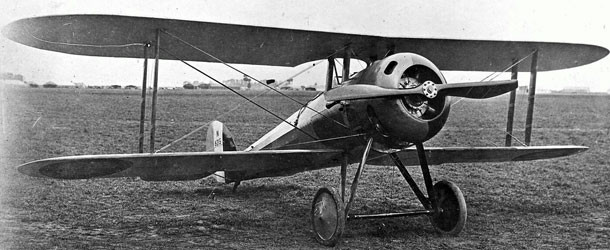
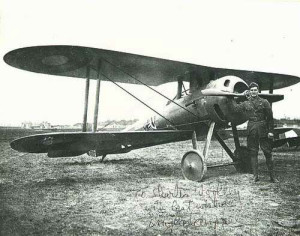

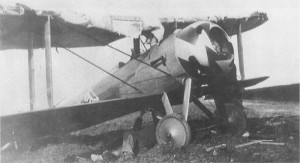
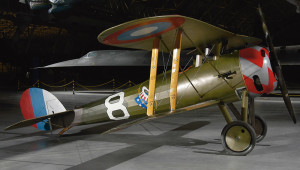
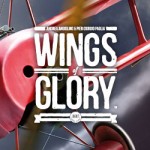


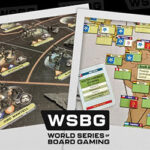
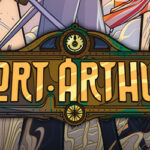


Follow Us on